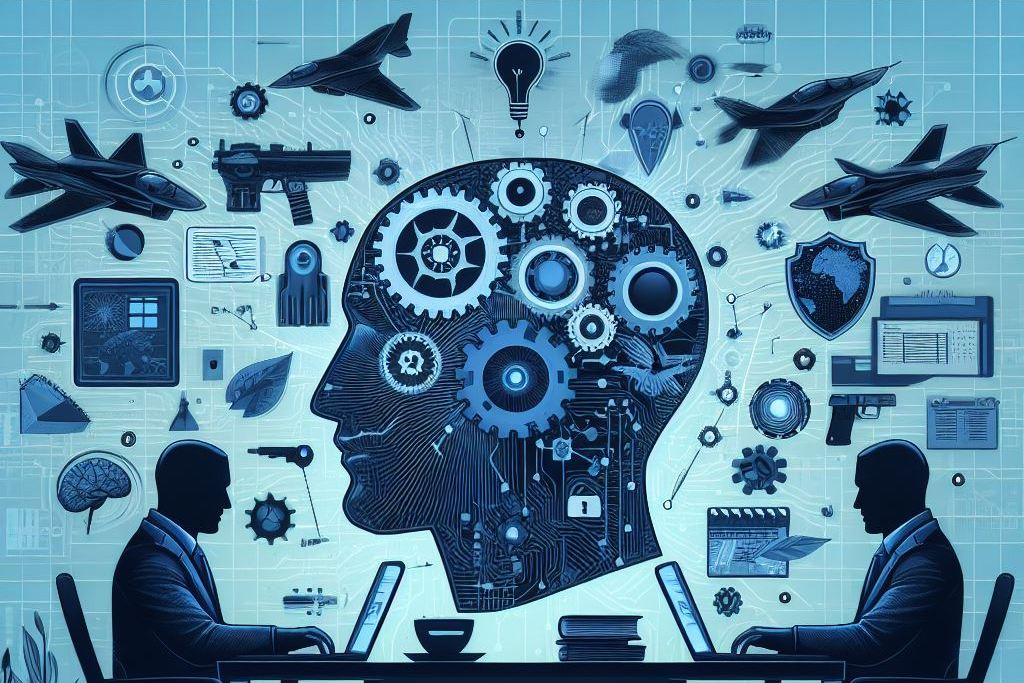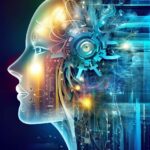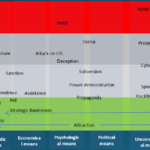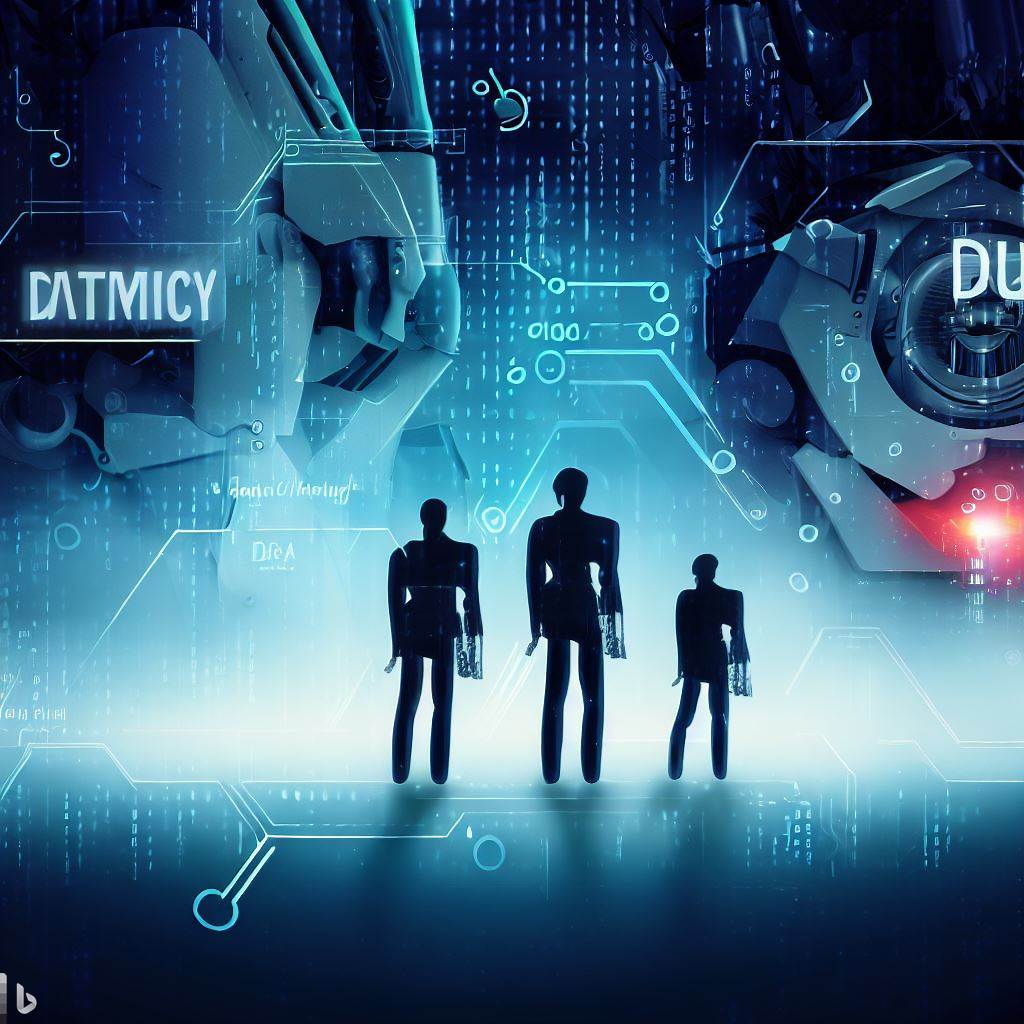In recent years, the rapid advancement of artificial intelligence (AI) and other emerging technologies has ushered in a new era of possibilities. From autonomous vehicles to intelligent personal assistants, these innovations have transformed various aspects of our lives. However, as we marvel at their potential, it is crucial to recognize the threats they pose to our democracy. In this article, we will delve into the potential risks and challenges that AI and emerging technologies present, and how they can impact the foundations of our democratic society.
- Disinformation and Manipulation: AI-powered algorithms can be used to spread disinformation, manipulate public opinion, and undermine the integrity of our democratic processes. With advanced machine learning capabilities, AI can analyze vast amounts of data and generate highly persuasive content, making it increasingly difficult to discern fact from fiction. This poses a significant risk to the public’s ability to make informed decisions and erodes trust in democratic institutions.
the use of AI and emerging technologies in disinformation and manipulation, highlighting the importance of awareness, regulation, and ethical considerations.
Deepfakes and Synthetic Media
One of the most concerning manifestations of AI in disinformation is the creation and proliferation of deepfakes. Deepfakes refer to manipulated videos, images, or audio recordings that convincingly depict someone saying or doing something they never did. With AI algorithms and machine learning techniques, individuals with malicious intent can fabricate content that appears genuine, potentially causing irreparable damage to reputations and trust. Deepfakes pose a significant threat to journalism, politics, and public figures, as they can be used to spread false narratives, incite violence, or manipulate public opinion.
Automated Disinformation Campaigns
AI-powered bots and algorithms have become a key tool for orchestrating automated disinformation campaigns on social media platforms. These campaigns involve the use of thousands of fake accounts and bots that disseminate misleading information, amplify divisive content, and manipulate online discourse. By exploiting AI algorithms, these campaigns can precisely target vulnerable populations and exploit their biases, amplifying polarization and sowing discord within society. The speed and scale at which these campaigns operate make it challenging for platforms to effectively detect and mitigate their impact.
Algorithmic Bias and Filter Bubbles
AI algorithms, while designed to provide personalized content and recommendations, can unintentionally create filter bubbles and reinforce preexisting biases. Filter bubbles occur when algorithms prioritize content based on user preferences, limiting exposure to diverse perspectives and reinforcing echo chambers. This phenomenon can contribute to the spread of disinformation as individuals become less exposed to contrasting viewpoints and alternative sources of information. Algorithmic bias also poses a risk, as AI systems may inadvertently amplify and perpetuate discriminatory narratives, exacerbating societal divisions.
Combating the Dark Side
Addressing the use of AI and emerging technologies in disinformation and manipulation requires a multi-faceted approach involving technology, regulation, and individual awareness.
- Technological Solutions: Researchers and technology companies must invest in the development of advanced detection algorithms capable of identifying deepfakes, fake accounts, and automated campaigns. Additionally, platforms should adopt stringent verification mechanisms and provide users with tools to critically evaluate information.
- Regulatory Measures: Governments and policymakers need to establish regulations that hold platforms accountable for the spread of disinformation and manipulation. Stricter guidelines can encourage transparency, combat the anonymity of bots, and ensure the responsible use of AI technologies.
- Media Literacy and Education: Educating individuals about media literacy and critical thinking is crucial in combating disinformation. By empowering users to recognize and question misleading content, society can collectively build resilience against manipulation.
- Ethical Considerations: Developers and users of AI technologies should prioritize ethical guidelines, ensuring responsible AI usage and preventing their unintentional misuse. Encouraging ethical AI practices, such as transparency, fairness, and accountability, can help minimize the negative impact of emerging technologies.
- Algorithmic Bias and Discrimination: One of the pressing concerns surrounding AI is algorithmic bias. If training data used to build AI systems is biased or incomplete, it can perpetuate and amplify societal prejudices. This can lead to discriminatory outcomes in areas such as employment, criminal justice, and access to public services. Such biases can exacerbate existing inequalities, undermining the principles of fairness and equal representation that are vital to a thriving democracy.
Algorithmic bias refers to the systematic and unfair prejudices embedded in AI algorithms that result in discriminatory outcomes, often reflecting societal biases and prejudices. Discrimination can occur across various domains, such as lending, hiring, criminal justice, and online content distribution. It arises when algorithms produce different outcomes or treatment for individuals or groups based on protected characteristics, such as race, gender, age, or ethnicity, leading to unequal opportunities and reinforcing social inequalities.
Root Causes of Algorithmic Bias
The causes of algorithmic bias are multifaceted and can be attributed to various factors:
- Data Bias: Algorithms learn from historical data, which may contain inherent biases and discriminatory patterns. If training data is unrepresentative or includes biased decisions from human decision-makers, the algorithm will perpetuate those biases.
- Design Bias: Bias can also emerge during the design and development stages of algorithms. Choices made during the development process, such as the selection of features or the optimization metrics, can unintentionally introduce bias.
- Lack of Diversity: The lack of diversity among AI developers, data scientists, and engineers can contribute to biased algorithms. Homogeneous teams may overlook certain perspectives and fail to identify and rectify biases.
- Feedback Loops: Biased outcomes generated by algorithms can reinforce existing inequalities. For example, if a recommendation system suggests certain products or opportunities based on biased patterns, it can perpetuate disparities and limit diversity.
Addressing Algorithmic Bias and Discrimination
- Diverse and Representative Data: Ensuring the training data used by algorithms represents a diverse range of individuals and situations is critical. Data collection practices must be carefully monitored to avoid sampling biases and reflect the true diversity of the population.
- Transparent and Explainable Algorithms: Developing algorithms that are explainable and transparent can help uncover biases and enhance accountability. Techniques like interpretability, fairness metrics, and transparency can aid in identifying and understanding biases.
- Ethical Frameworks and Guidelines: Establishing ethical frameworks and guidelines for the development and deployment of AI systems can promote responsible practices. This includes considering the potential impacts of algorithms on fairness, privacy, and human rights.
- Regular Audits and Assessments: Periodic audits and assessments of algorithms can help detect and rectify biases. Independent organizations and regulatory bodies can play a crucial role in evaluating algorithms for bias and ensuring compliance with fairness standards.
- Collaboration and Diversity: Encouraging collaboration between different stakeholders, including researchers, policymakers, and community representatives, can lead to more inclusive and fair algorithms. Diverse teams and perspectives are essential to identify biases and design solutions that mitigate discrimination.
- Threats to Privacy: Emerging technologies often rely on extensive data collection and analysis, raising concerns about the erosion of privacy. AI systems capable of processing personal information at scale may compromise individuals’ privacy rights, as data can be exploited for targeted surveillance or manipulation. Safeguarding citizens’ privacy is essential to maintaining the trust and autonomy necessary for a robust democratic society.
We explore some of the key areas where these technologies pose threats to privacy and the implications for society.
- Surveillance and Facial Recognition
One of the most prominent threats to privacy comes from the widespread use of surveillance technologies enabled by AI. Facial recognition systems, for instance, have raised significant concerns due to their potential for invasive monitoring and tracking. These systems can collect and analyze vast amounts of personal data, such as biometric identifiers, without individuals’ consent. Consequently, the possibility of constant surveillance and loss of anonymity poses a significant threat to privacy.
- Data Collection and Profiling
The proliferation of AI and emerging technologies has fueled the collection and analysis of massive amounts of personal data. From social media platforms to smart devices and online services, user data is being harvested, often without individuals’ explicit knowledge or consent. This data is used to create detailed profiles, which can be exploited for various purposes, including targeted advertising, manipulation, and discriminatory practices. The potential for abuse and unauthorized access to personal information raises substantial privacy concerns.
- Internet of Things (IoT) and Smart Devices
The rapid expansion of the Internet of Things (IoT) and smart devices has also amplified threats to privacy. These devices, ranging from smart speakers and home assistants to wearable gadgets, constantly collect and transmit data about users’ behavior and preferences. The interconnectedness of these devices poses the risk of unauthorized data access, data breaches, and the potential for misuse by third parties. Moreover, the lack of standardized security measures in IoT devices further compounds these privacy risks.
- Deepfake Technology
AI-powered deepfake technology, which allows the manipulation of images, videos, and audio, presents a new dimension of privacy threats. Deepfakes can be used to create highly realistic and deceptive content that can deceive individuals or damage their reputation. Privacy breaches can occur when AI-generated fake content is maliciously used to manipulate public opinion, spread disinformation, or harm someone’s personal and professional life. Safeguarding privacy in the face of deepfake technology poses a significant challenge.
- Concentration of Power: The rise of AI and emerging technologies is accompanied by a growing concentration of power in the hands of a few tech giants. The vast amounts of data collected by these companies, combined with their advanced AI capabilities, grant them significant influence over public discourse and decision-making. Such concentrated power can undermine the democratic ideal of a diverse and inclusive marketplace of ideas.
One of the key drivers behind the concentration of power is the massive amount of data being generated and collected. AI algorithms thrive on data, and organizations that possess vast amounts of data have a significant advantage. Tech giants and large corporations, with access to extensive data sets, can employ AI to extract valuable insights, gain market dominance, and influence consumer behavior. This leads to a concentration of power in the hands of those who control the data, limiting competition and creating barriers to entry for new players.
Moreover, the use of AI in surveillance technologies raises concerns about privacy and civil liberties. Governments and institutions can leverage AI-powered surveillance systems to monitor individuals, potentially leading to abuses of power and the erosion of personal freedoms.
The concentration of power brought about by AI and emerging technologies raises important questions about regulation and accountability. As technology evolves at a rapid pace, lawmakers and regulatory bodies struggle to keep up with its implications.
Effective regulation is necessary to ensure that the deployment of AI and emerging technologies is done in a responsible and ethical manner. It should address concerns regarding data privacy, algorithmic transparency, and the potential impact on employment. Striking a balance between innovation and safeguarding against the concentration of power requires collaboration between governments, tech companies, and civil society.
- Job Displacement and Economic Inequality: The rapid automation driven by AI and emerging technologies has the potential to disrupt labor markets and exacerbate economic inequality. While these technologies offer opportunities for increased productivity and economic growth, they also threaten certain job sectors, leading to unemployment and social unrest. Addressing the resulting income disparities and providing adequate support for those affected is crucial to ensuring a stable and inclusive democracy.
The integration of AI and automation technologies has led to significant changes in the job market. Routine and repetitive tasks that were once performed by humans are now being automated, leading to job displacement in certain sectors. Industries such as manufacturing, logistics, and customer service have witnessed significant shifts, with machines replacing humans in routine and predictable tasks.
The benefits of automation are clear – increased productivity, cost savings, and improved accuracy. However, the downside is that many individuals find themselves out of work or face a reduced demand for their skills. This displacement can have far-reaching consequences, including unemployment, skill gaps, and financial instability.
Economic Inequality: A Growing Divide
The impact of job displacement is closely linked to economic inequality. As AI and automation reshape the workforce, individuals with skill sets that align with emerging technologies are better positioned to benefit. However, those who lack the necessary skills may face significant challenges in finding meaningful employment or may be forced to settle for low-paying jobs.
Moreover, the deployment of AI and automation technologies is often concentrated in large organizations with substantial resources, leaving smaller businesses and individuals struggling to adapt. This disparity contributes to a widening wealth gap, as those who have access to and can harness the power of these technologies are more likely to succeed in the evolving job market.
Addressing the Challenges: A Multi-Faceted Approach
As we navigate the impact of AI and emerging technologies on job displacement and economic inequality, it is crucial to develop a multi-faceted approach that addresses both the short-term and long-term implications. Here are some strategies to consider:
- Upskilling and Reskilling: Investing in training programs and educational initiatives can help individuals acquire new skills that are in demand. Governments, educational institutions, and businesses should collaborate to provide accessible and affordable opportunities for upskilling and reskilling.
- Social Safety Nets: As individuals face temporary or prolonged unemployment due to job displacement, robust social safety nets can provide essential support. This includes unemployment benefits, healthcare provisions, and retraining programs to ensure a smoother transition into new employment.
- Ethical Implementation of AI: Policymakers and industry leaders must prioritize the ethical implementation of AI and automation technologies. This includes responsible data usage, transparent algorithms, and accountability to ensure that the benefits are equitably distributed across society.
- Entrepreneurship and Innovation: Encouraging entrepreneurship and innovation can empower individuals to create their own opportunities. Governments can provide incentives and resources to support startups and small businesses, fostering a diverse and resilient economy.
- Collaboration and Dialogue: To effectively address the challenges posed by job displacement and economic inequality, it is vital to foster collaboration and dialogue among policymakers, industry leaders, academics, and society at large. By working together, we can develop comprehensive strategies and policies that consider the needs of all stakeholders.
As AI and emerging technologies continue to advance, it is imperative to confront and mitigate the threats they pose to our democracy. Safeguarding against disinformation, addressing algorithmic biases, protecting privacy, and promoting equitable access to opportunities are essential steps. It is crucial that policymakers, technology developers, and society as a whole work together to ensure that these powerful tools are deployed ethically, transparently, and in a manner that upholds democratic values. By addressing these challenges head-on, we can harness the potential of AI and emerging technologies while safeguarding the foundations of our democratic society.




